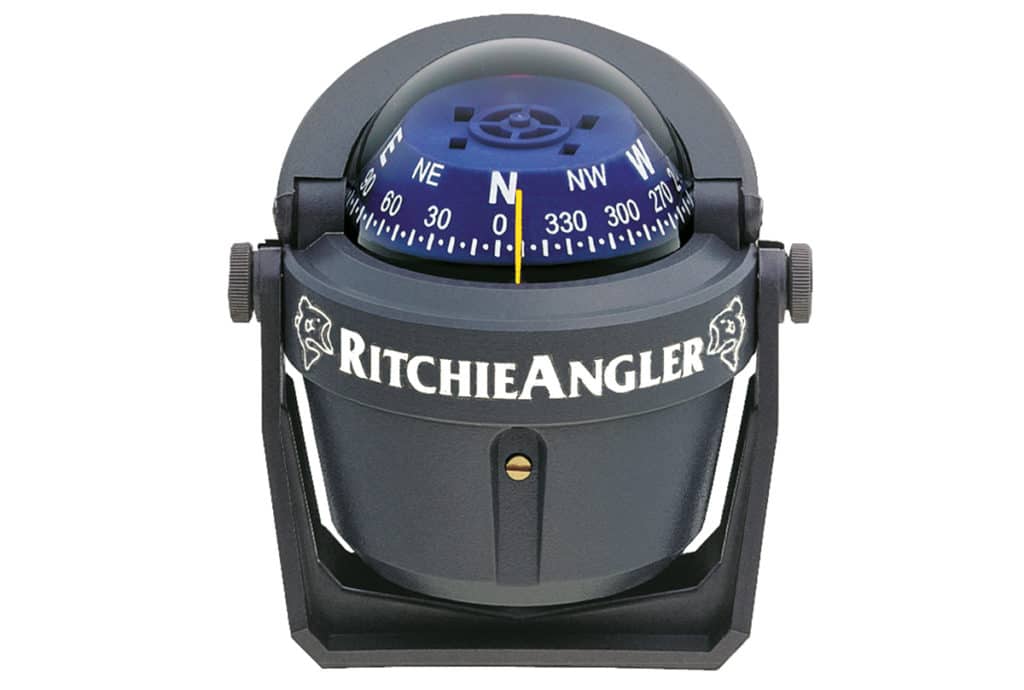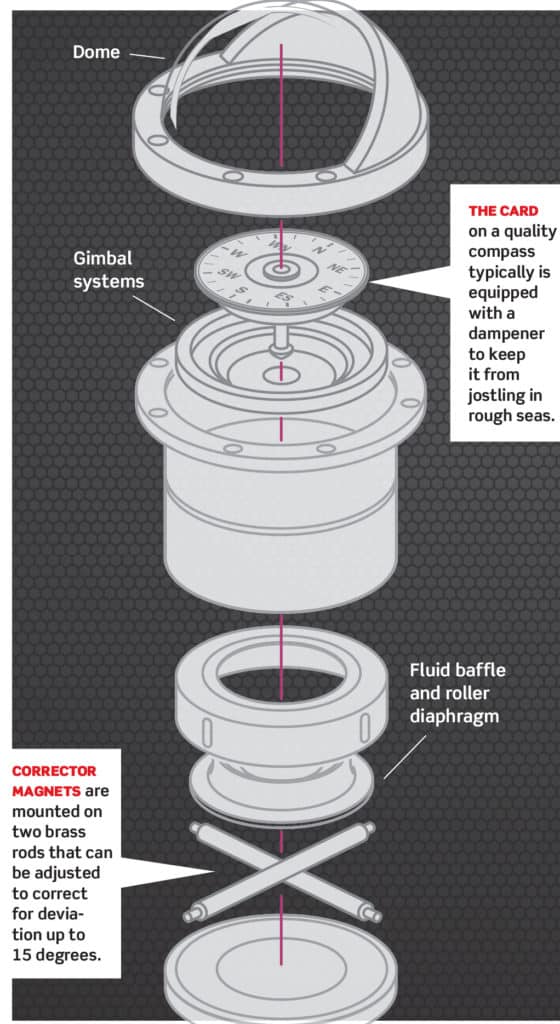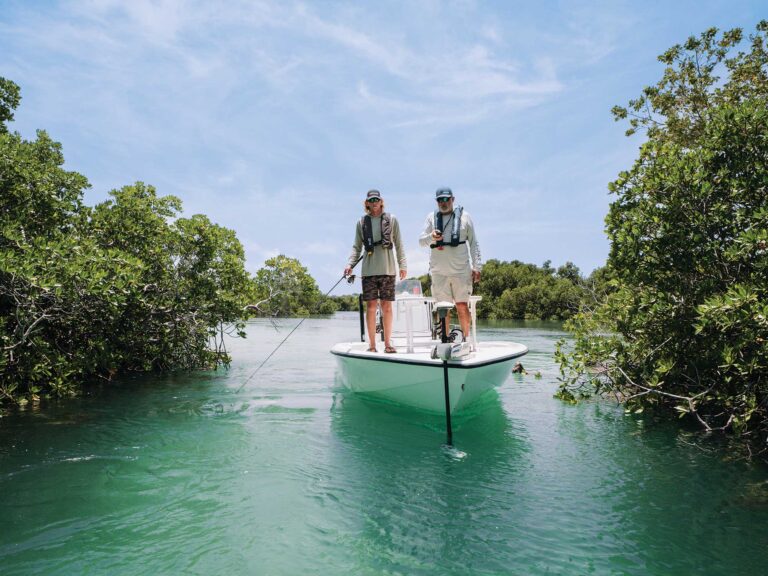
Despite the wealth of information boaters can glean from their electronics, serious skippers still use a mounted compass in the course of navigation. When it’s installed properly, a good compass serves as a reliable, simple tool for setting and keeping a course. Here, using a Ritchie compass as an example and with some help from West Marine, is what to look for in a quality marine compass.
The Mount
If you are installing a compass, the first thing you need to determine is where and how to mount it. Flush-mounted compasses, mounted horizontally on the helm, take up less space and are generally the most stable. If that is not an option on your boat, there are also surface-, binnacle- and bracket-mounted compasses that don’t require space underneath to install. No matter how you install one, it’s crucial that the compass’s lubber line be parallel with the keel along the centerline to get a proper reading.
Magnetic North
A marine compass will have one set of magnets that is balanced to seek out magnetic north. Magnetic north is not true north — as in the North Pole — but the location of Earth’s north polarization, near Greenland. The compass rose on nautical charts shows the difference, called variation, between true north and magnetic north for navigation.
Corrector Magnets
A quality marine compass will also house a second set of magnets called the corrector magnets. These correct the deviation that can occur from interference caused by your boat’s electronics or other magnetic sources. The correctors are connected to adjustable brass rods installed in the lower portion of the compass housing, enabling you to compensate, or “swing,” your compass card to adjust for deviation.
Gimbals
To protect the compass from jostling around with a boat’s normal pitch and roll, it’s imperative that a marine compass has a built-in gimbal system. Ritchie makes all its compasses with an aluminum gimbal that cradles the dial to provide stability. The system is mounted on spring-loaded brass pins and kept level with a weighted-brass counterbalance.
Cards
The dial, also called the card, is the numbered circular piece you use to read the degree of heading. It rotates on a steel pivot mounted on a sapphire jewel “movement” that helps with smooth turning. Front-reading compasses have a semisphere card, good for eye-level readings, but the flat-card style is dampened, thus more stable in rough water. This style also allows you to take bearings relative to your course.










